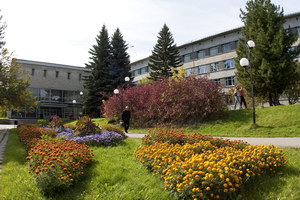Load-flow model of a multi-energy system

Current trends in the energy development includes the creation of multi-energy systems (MES) with several energy carriers that are planned, designed and operated with essential coordination of their subsystems. When managing the development and functioning of such systems, optimization problems should be solved to minimize the cost of production, transmission and distribution of energy resources. Traditionally, the means of such minimization are the redistribution of the loads of generation sources, consumers and energy storage devices. The topology of MES if different for different energy carriers, and topologies are combined through energy hubs - nodes in which energy is converted from one type to another. Such transformation can simply be considered as the consumption of one type of energy with the simultaneous generation of another type. This provides brand new opportunities for optimizing modes specific to a MES. Essential part of the search of optimal solution is the calculation of the load flow - that is, the determination of nodes' and connections' mode parameters of the system subject to balance equations (Kirchhoff's circuit laws). The load flow equations act as constraints in optimization problems. This paper presents an attempt to form a single model for calculating the load flow of different energy carriers in a MES. © The Authors, published by EDP Sciences, 2019.
Библиографическая ссылка
Efimov D., Bykov D. Load-flow model of a multi-energy system // E3S Web of Conferences. Vol.139. ID: 01050. 2019. DOI: 10.1051/e3sconf/201913901050
Скопировать
WOS
SCOPUS



